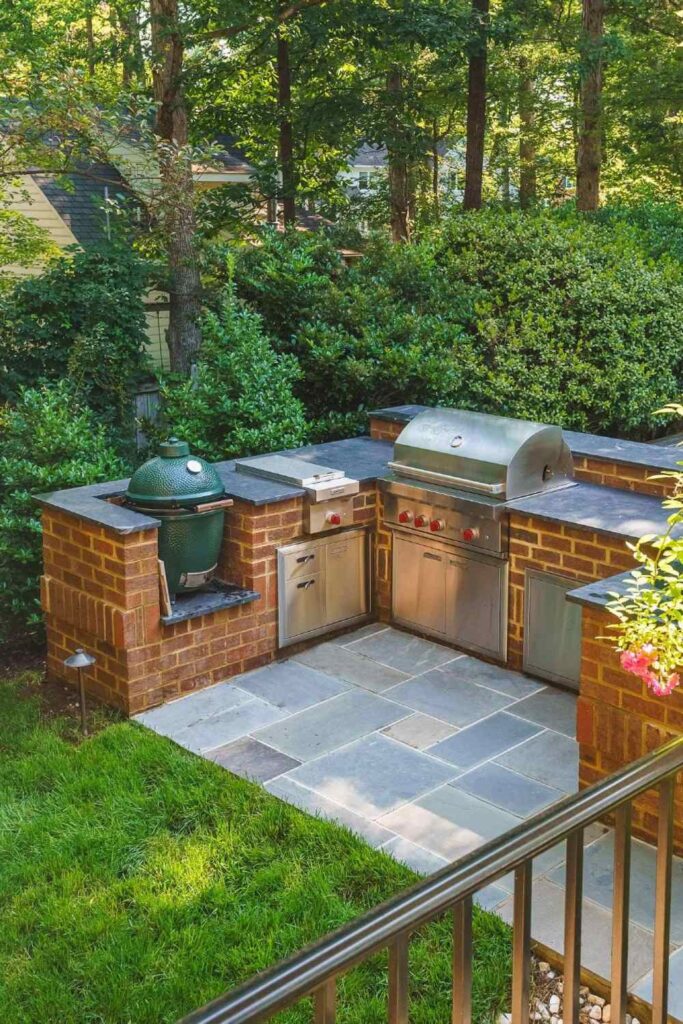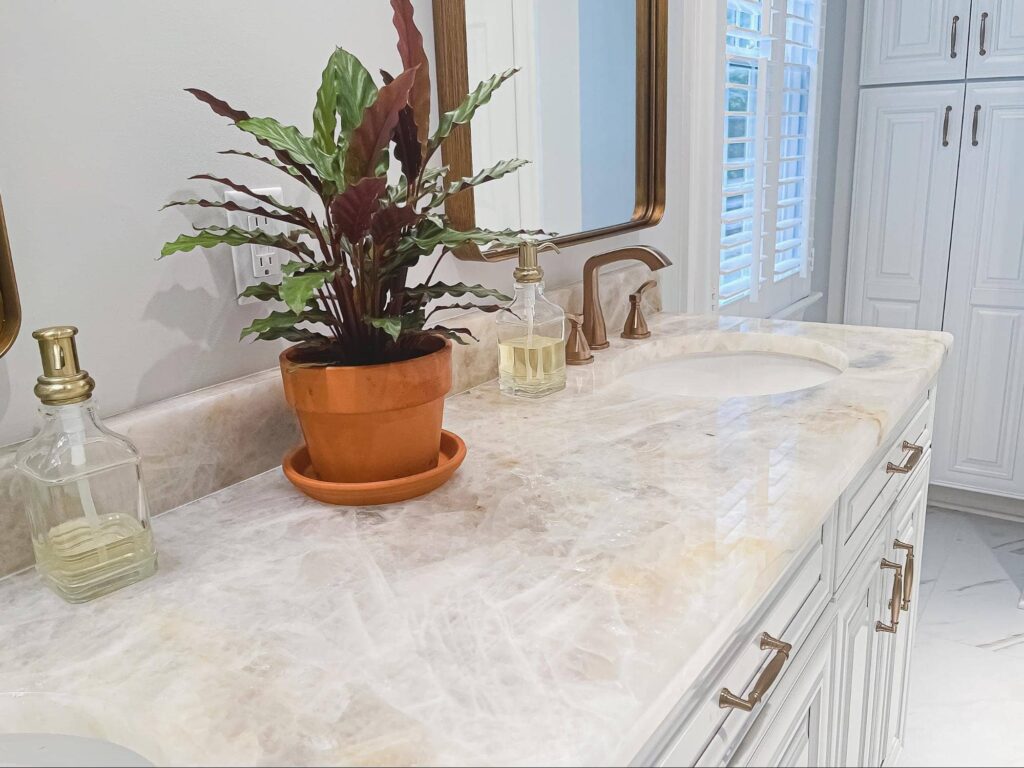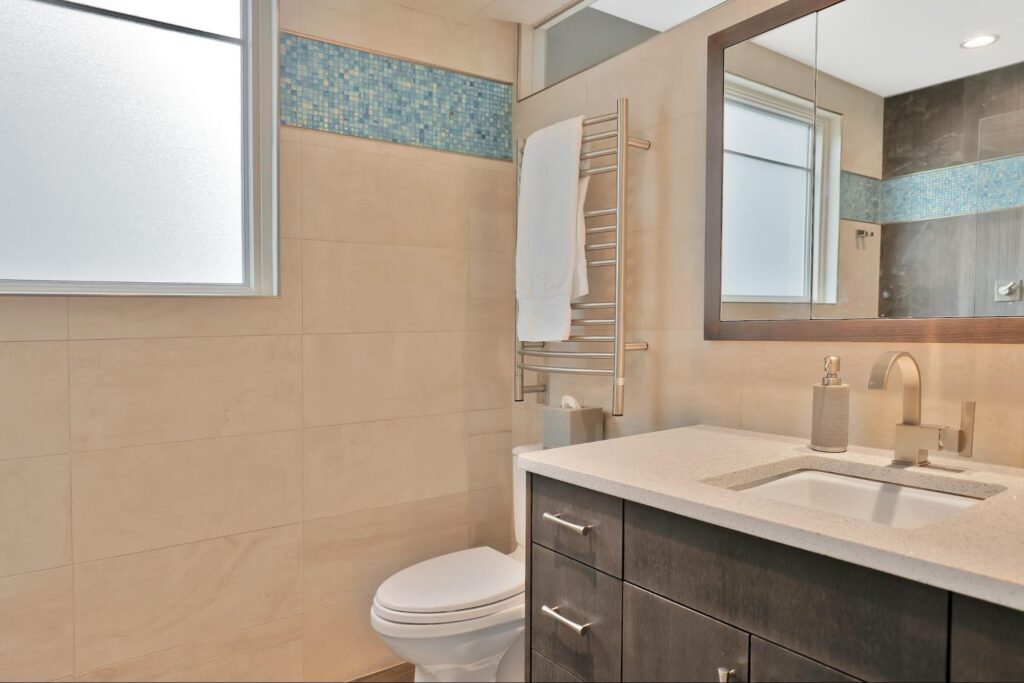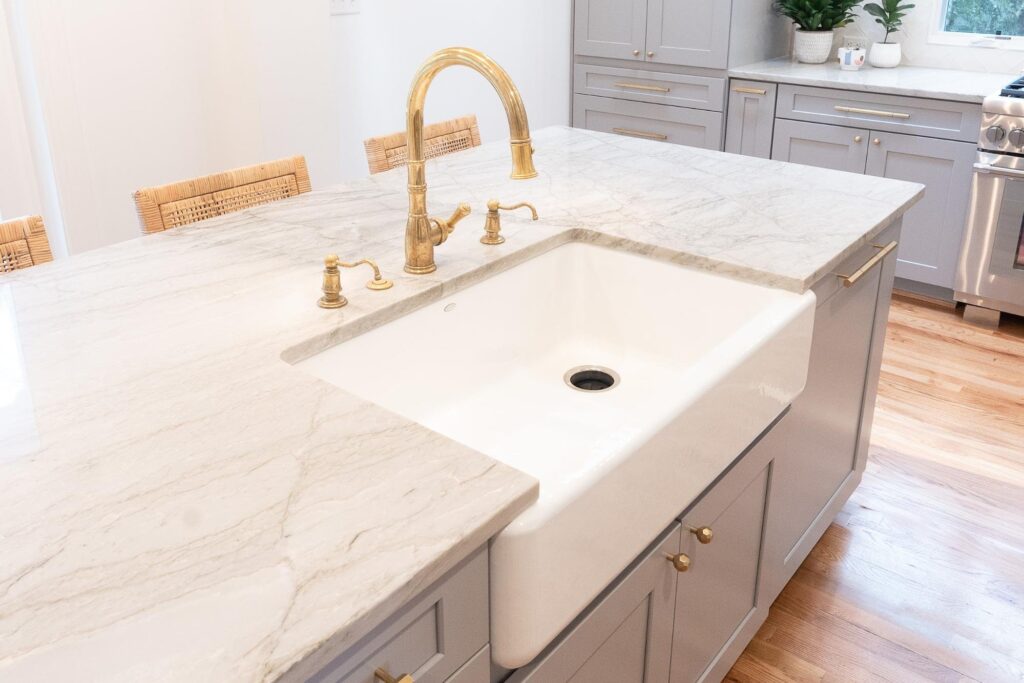To help you determine the best material for your space and needs, here are a few popular choices for a variety of places.
At James River Construction (JRC)
Decades ago, when you needed to replace your countertops, your choices were – for the most part – laminate or granite, but those days are long gone.
Nowadays you’ll have to choose from engineered seamless stone, concrete, metal, wood and just about anything else you can dream up. But not all surfaces work for all purposes. Nearly every material will require a certain amount of maintenance to keep it looking great, which means you have to consider not only your needs for the space, but the material’s as well. Additionally, you’ll need to consider the environment in which the countertop lives, as they exist in so many places beyond the kitchen.
To help you determine the best material for your space and needs, here are a few popular choices for a variety of places.
OUTDOOR KITCHEN AND BAR COUNTERTOPS: LEATHERED GRANITE AND CONCRETE
With the rise in popularity of outdoor kitchens is the need for specialized materials that hold up not just to the heat, but also the weather. However, even in outdoor scenarios, countertops are being used in a variety of ways beyond the kitchen including built-in table tops, fireplace and fire pit toppers, or service and bar tops.
In an outdoor setting the material needs to be tough, but it also needs to be easy to keep looking clean. For this table and fireplace top, leathered granite provides a strong surface without sheen. That means it isn’t as obvious every time a bit of liquid or dust lands on the surface, so you’re not constantly wiping and cleaning.

Another great option for outdoor kitchens and service areas is poured concrete. When properly sealed it is stain, heat and water resistant. However, if it is not sealed correctly and if the seal is not maintained, the porous material can absorb stains and moisture. Kitchen cabinetry or stonework underneath a concrete countertop also needs to be designed to hold the additional weight that concrete adds. Natural stone and slate can also be used in certain areas with the understanding that they will need to be sealed regularly and may not hold up quite as well over time.

SERVICE AND LAUNDRY BAR TOPS: BUTCHER BLOCK
Like outdoor kitchens, the wet and dry bars have made a big comeback in home design recently. Separating out the areas for drink service keep kitchens from becoming crammed during an event and help create more intimate and convenient entertaining areas. A drink service counter is the perfect place to incorporate natural wood materials. The softness of wood makes it less likely that you chip or break a glass when setting it down and because the surface won’t be seeing hard work like a regular kitchen countertop, it doesn’t need to be as tough and impenetrable. However, it is a good idea to regularly seal butcher block to avoid red wine and other stains

Another excellent area to incorporate butcher block and natural wood surfaces is in the laundry room. This counter-height island in the middle of a spacious laundry room is the perfect place to fold and sort laundry, and even provides a comfortable spot to sit. The wood brings a nice warmth to an otherwise utilitarian space.

BATHROOM VANITIES: NATURAL STONE
More lightly used bathroom vanities are the ideal place to use softer or more delicate stones such as marble or natural quartz. While some engineered quartz countertops can be very durable, natural cuts of stone are more likely to chip or stain under heavy use, especially if they are a light color..

This beautiful, crystalline quartz countertop is nearly translucent and wouldn’t hold up to the everyday use of a kitchen. However, in a primary bathroom it creates a luxurious and lovely statement that will stand up over time.
KITCHEN COUNTERTOPS: GRANITE, ENGINEERED QUARTZ
Finally, the workhorse of the house: the kitchen countertops. Here is where a sturdy, solid granite or engineered quartz is up to the task. Although a man made product, engineered quartz is 90 to 94% natural materials with the rest being resins and pigments. This addition of resin means that engineered quartz is durable and nonporous. It is also incredibly strong and therefore resistant to scratching and chipping. The best part? You don’t have to seal it – it is nearly maintenance free. Another plus? Quartz is a sustainable product with it being an abundant material and the final product being non toxic and non allergenic. The patterns most engineered quartz manufacturers are making are light, consistent and subtle, however the options are growing as this material becomes more and more popular.

Of course, good old granite still comes in an incredibly wide variety of colors, textures and patterns, and remains one of the most popular countertop choices. When sealed annually it is stain-proof, heat-proof and water resistant. It’s hard to beat its durability, price point and options, and it’s still a beautiful choice for a range of styles, with every piece being unique and one of a kind..

